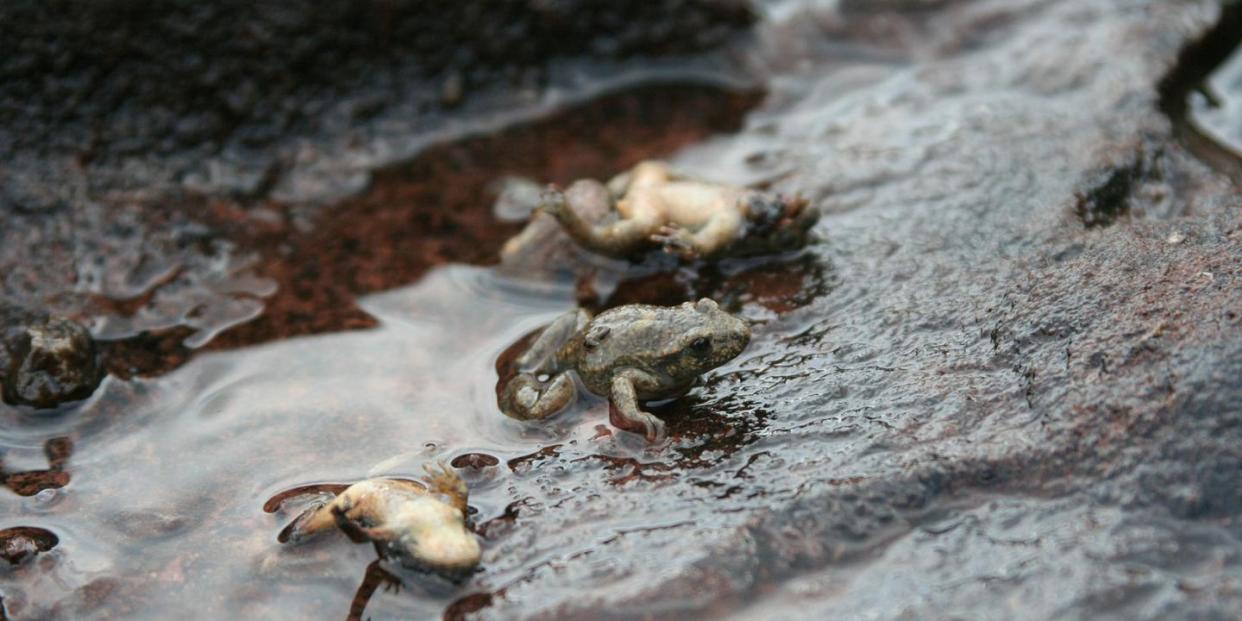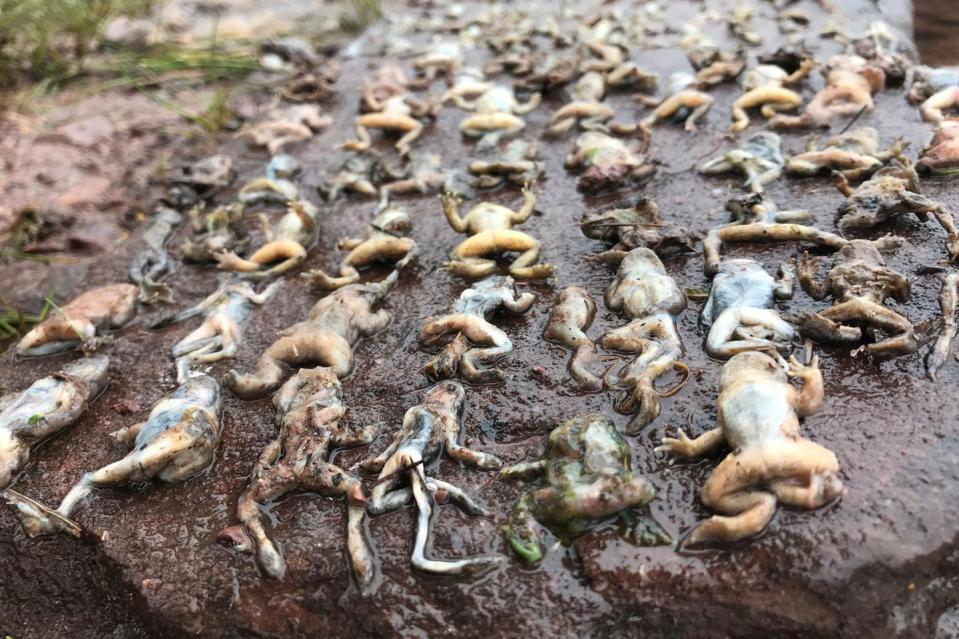Researchers Find Origin of Deadly Amphibian Plague

The past century has been pretty apocalyptic for amphibians. Since about the mid 1900s, a strange flesh-eating fungus has spread across the world, infecting hundreds of different species of amphibians and driving many of them to the brink of extinction. Now, thanks to new research published in the journal Science, we finally know where that parasite comes from.
The parasite in question is called Batrachochytrium dendrobatidis, or Bd for short, and first appeared on scientists’ radar in 1998 when it was discovered in populations of frogs and toads in Australia and Panama. At the time, scientists knew that populations of amphibians around the world had been declining, but until Bd was identified as the suspect no one knew what was causing it.
In the 20 years since Bd was first identified, it’s ravaged amphibian species on every continent except Antarctica, driving over 200 species to extinction or to the brink of it. “This is the worst pathogen in the history of the world, as far as we can tell, in terms of its impacts on biodiversity,” said study author Mat Fisher to National Geographic.

In order to learn as much as possible about this menace, a group of over 50 researchers spent the past decade building a genetic database of all the different versions of Bd from every continent where it was found. The researchers would find an infected amphibian, collect a tissue sample, then isolate the fungus and sequence its DNA. Then, the researchers would use the genetic differences between samples to build a Bd family tree.
With this information, the researchers managed to trace the history of Bd’s evolution back through the decades to the Korean peninsula, suggesting that the modern form of Bd arose sometime around the Korean War. Likely, the pathogen was transported to other continents shortly afterward and began decimating populations of amphibians unfamiliar with it.
Unfortunately, this research is simply bad news for those amphibian populations. It show that there are many forms of Bd and that the fungus can mutate quickly, changing from a mild version into a deadly version almost overnight. There are plenty of strains of the fungus, particularly in Brazil and Africa, that could rapidly turn lethal.
For now, the best option is to try and limit further spread of the fungus, but that’s easier said than done. Bd in some form or another is in nearly every country on Earth, and it may already be too late. Short of developing some sort of cure and delivering it to populations of amphibians, it may simply be up to those amphibians to survive by themselves. Best of luck.
Source: National Geographic
You Might Also Like

